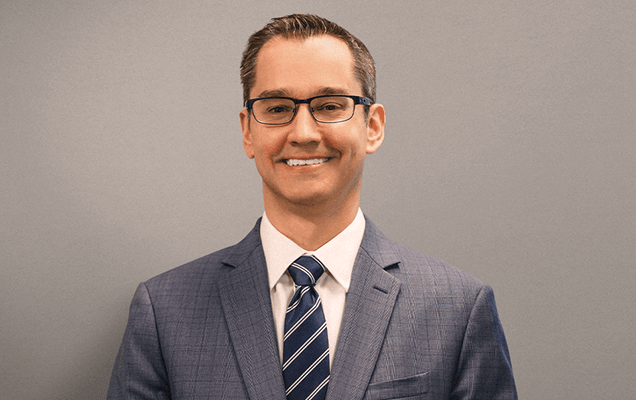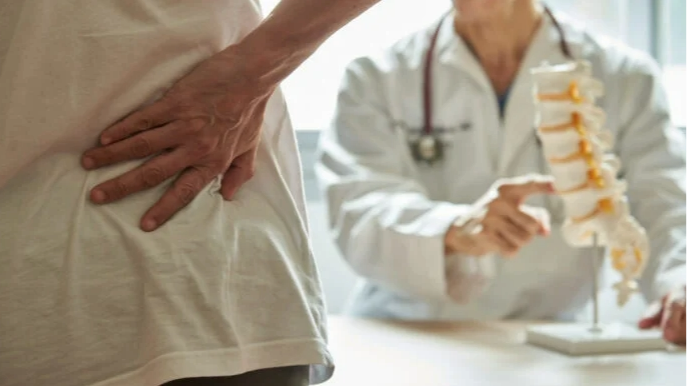Understanding Posterior Lumbar Interbody Fusion (PLIF)
Posterior lumbar interbody fusion (PLIF) is a surgical procedure aimed at alleviating persistent back and leg pain caused by a variety of spinal conditions.
This article will navigate the PLIF procedure, providing a clear understanding of the benefits, risks, and the recovery process.
The Anatomy of the Lumbar Spine
Before discussing the specifics of PLIF, it’s crucial to understand the anatomy it involves.
The lumbar spine consists of five vertebral bodies stacked on top of each other, separated by intervertebral discs that act as cushions, providing flexibility and shock absorption.
The spinal cord and the nerve roots run through a canal in the vertebral column, and spinal nerves, including the sciatic nerve, branch off to various parts of the body. Facet joints connect the vertebrae and allow for movement while also providing stability.
What is Posterior Lumbar Interbody Fusion (PLIF)?
PLIF is a type of spinal fusion surgery targeting the lower back or lumbar spine. The ‘posterior’ in PLIF refers to the approach surgeons take during the procedure, accessing the spine from the back.
During a posterior lumbar interbody fusion procedure, the surgeon removes the damaged intervertebral disc which is often the cause of chronic back pain and neurological symptoms.
The disc space is then prepared for fusion.
Bone Graft Material and Fusion
Fusion is a critical part of the PLIF procedure. The goal is to promote the growth of new bones between the vertebral bodies where the disc was removed.
Surgeons use bone graft material, which may come from the patient (autograft), a donor (allograft), or synthetic substances, to facilitate this process.
Over time, a biological process called ‘fusion’ occurs, essentially welding the adjacent vertebrae together, eliminating motion at the problematic segment, and providing long-term stability.
Advancements in PLIF Technique and Bone Graft Materials
The field of spine surgery is continuously evolving, with advancements in techniques and materials significantly impacting the success of PLIF.
Modern bone graft materials, including demineralized bone matrices and synthetic options, offer alternatives to traditional bone grafts and can enhance the fusion process.
Incorporating Hardware: Pedicle Screws and Rods
To maintain spinal alignment and ensure stability while fusion occurs, surgeons use hardware such as pedicle screws and rods.
These screws are anchored into the vertebral bodies and connected by rods to provide immediate structural support.
Minimally Invasive Surgery and PLIF
PLIF can also be performed as a minimally invasive surgery. Minimally invasive PLIF involves smaller incisions, less muscle disruption, and often results in quicker recovery times. This approach reduces the impact on surrounding tissues and leads to fewer postoperative complications.
PLIF vs. Transforaminal Lumbar Interbody Fusion (TLIF)
While discussing types of spinal fusion, it’s worth mentioning Transforaminal Lumbar Interbody Fusion (TLIF), a variant of PLIF. Both aim to achieve spinal fusion, but the approach differs slightly.
TLIF involves a more lateral approach to access the disc space, potentially reducing the manipulation of the spinal nerve and spinal cord during the procedure.
Conditions Treated with PLIF
There are several conditions that PLIF is typically recommended for.
Some of these include:
- Degenerative Disc Disease
- Spondylolisthesis
- Spinal Stenosis
- Recurring disc herniations
Patient Selection and Individualized Treatment
Patient selection is critical when considering PLIF. Not everyone with lower back pain is a candidate for this surgery. Ideal candidates are those who have not responded to conservative treatments, such as physical therapy, medications, or injections, and whose pain can be traced to a specific spinal problem addressable by PLIF.
Risks and Considerations
Like any surgical procedure, PLIF carries risks, such as infection, nerve damage, and the possibility of non-union (where fusion does not occur). It’s essential to discuss these risks with your surgeon and weigh them against the potential benefits of the surgery.
The PLIF Procedure: Step by Step
- Preparation: The patient is placed under general anesthesia and positioned face-down.
- Incision: A midline incision is made on the lower back.
- Exposure: The muscles are carefully retracted to expose the affected vertebral bodies and facet joints.
- Removal of the Disc: The damaged disc is removed to relieve pressure on the nerve roots.
- Placement of Bone Graft: The disc space is filled with bone graft material to promote fusion.
- Hardware Insertion: A synthetic cage is placed into the disc space to expand and hold open the disc space and to promote fusion. Pedicle screws and rods are placed to stabilize the spine.
- Closure: The muscles and tissues are repositioned, and the incision is closed.
It's time to get back to doing what you love.
The Role of Facet Joints and Nerve Roots in PLIF
Facet joints play a crucial role in maintaining the spine’s stability and flexibility. During PLIF, care is taken to preserve these joints’ integrity while alleviating the pain they may cause.
Similarly, nerve roots, the pathways through which spinal nerves exit the spinal column, are delicately managed during the procedure.
Surgeons meticulously work to decompress these nerve roots, providing relief from the radiating leg pain often associated with lumbar spine conditions.
Recovery from PLIF Surgery
Recovery from a PLIF procedure involves a hospital stay, followed by a period of limited activity. Physical therapy plays a vital role in recovery, helping patients regain strength and flexibility. The fusion process can take several months, during which patients gradually return to normal activities.
The journey to recovery post-PLIF is gradual. Patients often experience immediate relief from leg pain, while back pain diminishes over time as the fusion solidifies.
Patients should adhere to their surgeon’s guidelines, attend follow-up appointments, and engage in prescribed physical therapy. With commitment and patience, most patients can look forward to returning to an active, pain-reduced lifestyle.
Benefits of PLIF
Undergoing PLIF can be a transformative experience for those suffering from chronic back pain. It’s a procedure that not only alleviates pain but also restores function and quality of life.
As medical technology progresses, PLIF and similar spinal fusion surgeries continue to improve, offering hope to those seeking relief from the debilitating effects of lumbar spine conditions.
Conclusion
Posterior lumbar interbody fusion (PLIF) is a comprehensive surgical procedure designed to alleviate debilitating back and leg pain due to various lumbar spine conditions.

About Dr. William S. Cobb
Dr. William Cobb is an accomplished neurosurgeon in North Jersey and a proud member of Neurosurgeons of New Jersey, practicing out of their Ridgewood office conveniently located on East Ridgewood Avenue. During his Neurological Surgery residency, he became passionate about the development and treatment of brain tumors affecting the brain and spine. Dr. Cobb uses state-of-the-art technology for surgical intervention in the treatment of tumors of the brain and spine including Gamma Knife radiosurgery. He has vast experience in using modern minimally invasive surgery for the treatment of degenerative spine and intervertebral disc disease. Dr. Cobb serves as the Director of Neurosurgical Oncology at Valley Hospital. He's accepting new patients.







